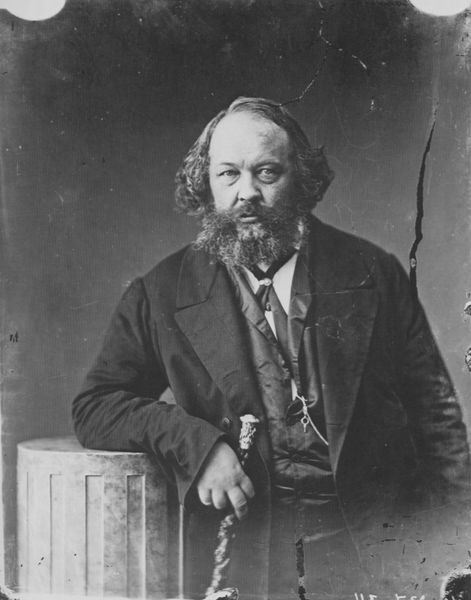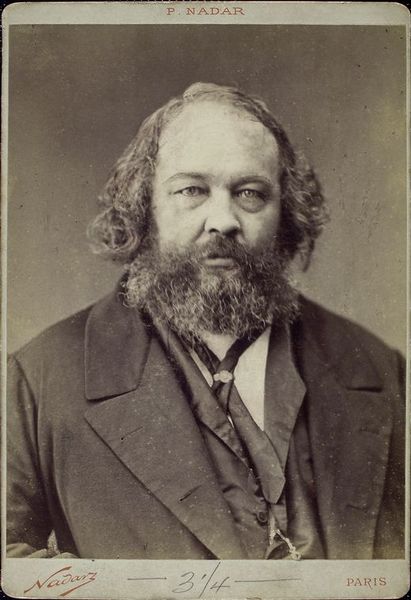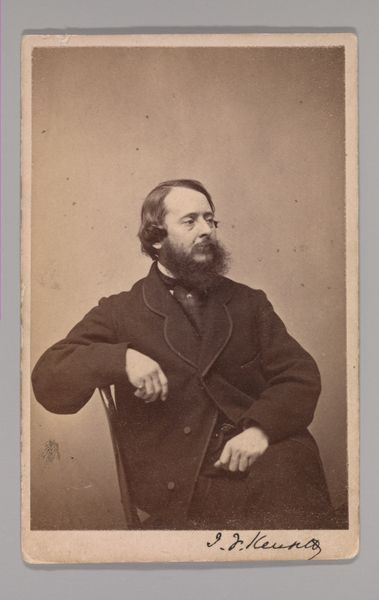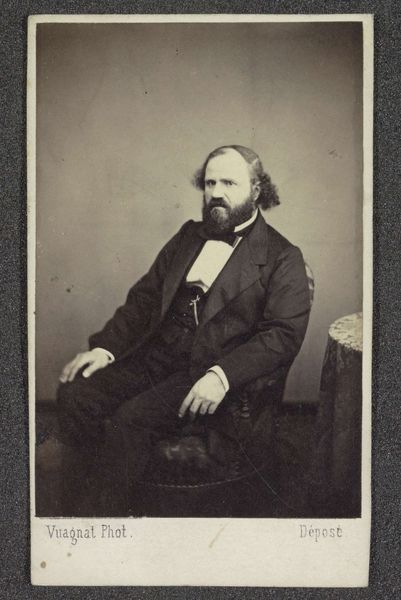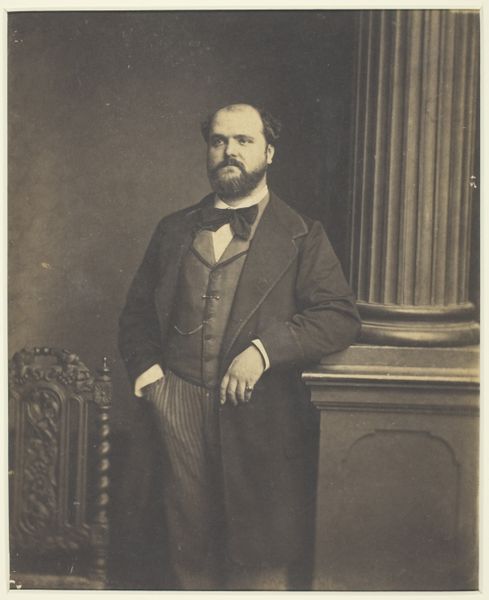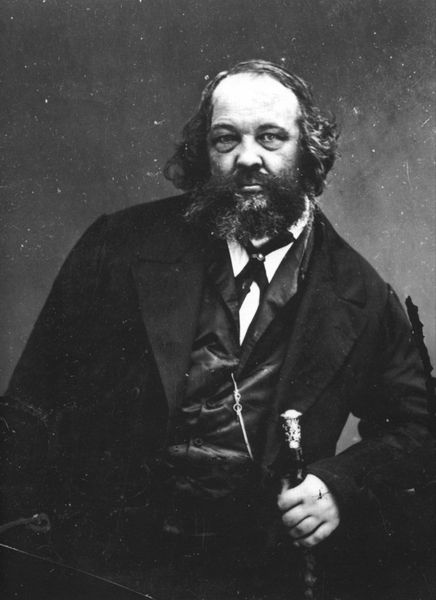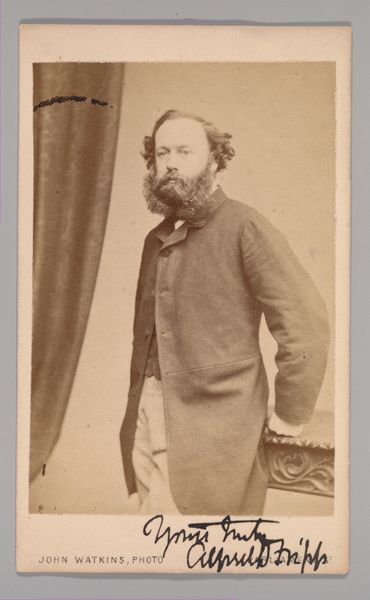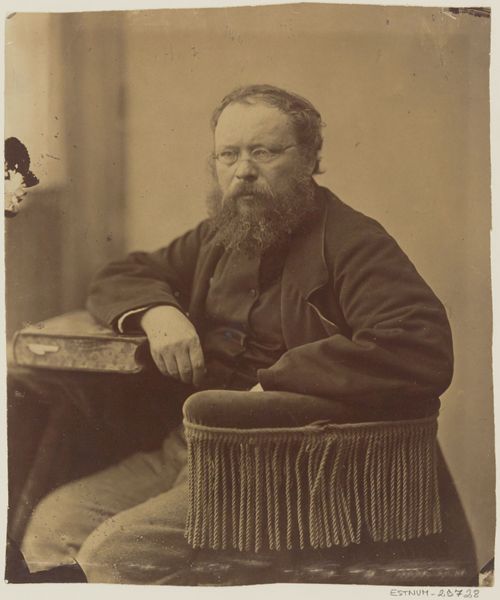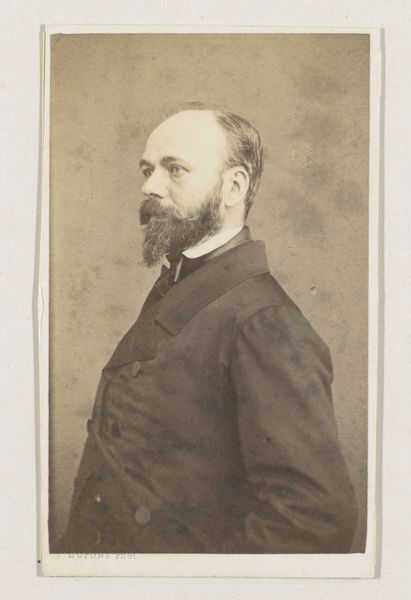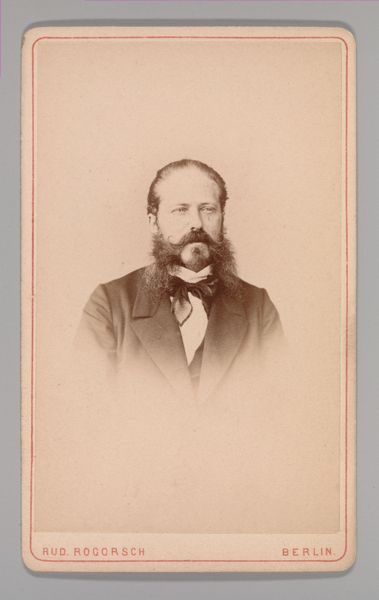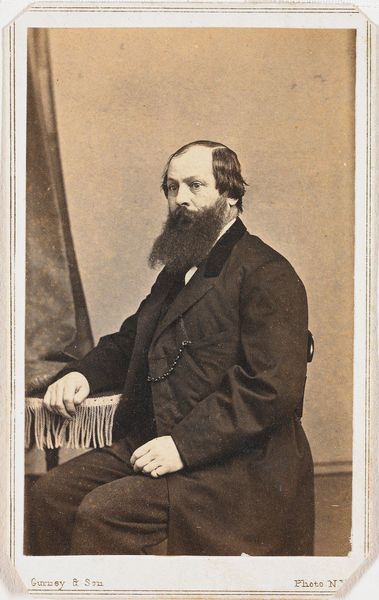
#
wedding photograph
#
photo restoration
#
low key portrait
#
photo element
#
historical photography
#
portrait reference
#
single portrait
#
photographic element
#
portrait character photography
#
celebrity portrait
Copyright: Public domain
Editor: So, this is Félix Nadar’s photograph of Mikhail Bakunin, the Russian anarchist, taken in 1860. It's a very direct portrait. What strikes me most is the intensity of his gaze; it’s very… determined. How do you interpret this work? Curator: Nadar captured more than just Bakunin’s physical likeness; he framed a revolutionary ethos. This image isn't simply a portrait, it’s a political statement. Consider the 1860s. What sociopolitical movements were brewing in Europe at the time? Editor: Well, there were definitely rumblings of discontent with the existing power structures, early socialist and anarchist movements... Curator: Precisely. And here we have Bakunin, a key figure, presented not as a wild-eyed radical, but as a thoughtful, almost dignified intellectual. How does this influence our understanding of the man and his ideology? It challenges stereotypes and forces us to confront the complexities within these movements. What do you make of his posture and expression? Editor: He looks like he's intentionally projecting authority while also being rather accessible. It doesn't fit the stereotype of an anarchist as chaotic. Curator: Exactly. Nadar seems to be actively constructing an image, which aimed to shift public perceptions. Photography, like any medium, is never neutral, especially when portraying figures who challenged the status quo. Do you agree that visual representation significantly shaped how these figures were understood? Editor: Absolutely. Seeing him presented this way makes me reconsider how power dynamics shape our view of historical figures and movements. I assumed anarchists had no structure. Curator: It invites critical questioning and disrupts ingrained prejudices, and the subversion of stereotypes and historical events opens discussion. It's powerful to recontextualize our position in the ongoing story of anarchy and to encourage understanding and insight through different visual interpretations.
Comments
No comments
Be the first to comment and join the conversation on the ultimate creative platform.
